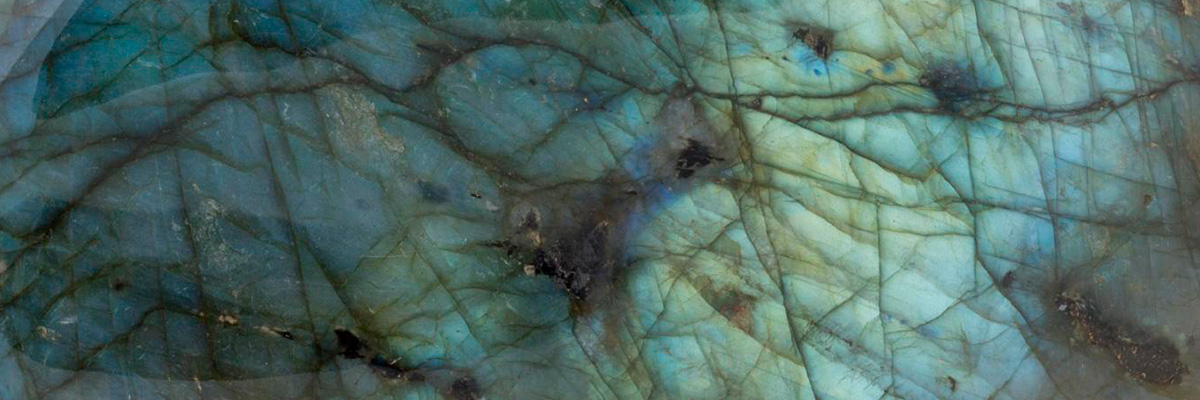Labradorite is a fascinating mineral belonging to the plagioclase feldspar group within the tectosilicates class. This captivating mineral is renowned for its remarkable optical phenomenon called labradorescence, which displays a vivid play of colors, including blues, greens, and yellows, when light interacts with its surface. Labradorite features a gray to dark gray background color and is typically found in aggregate form, with a crystalline structure ranging from massive to granular.
Usage
While labradorite is not a primary source for industrial applications, its striking appearance makes it a popular choice for decorative items and ornamental purposes. Labradorite is frequently used in sculptures, carvings, and as a building material, particularly for countertops and backsplashes. Its unique iridescence and aesthetic appeal also make it a sought-after choice for interior design and architectural projects.
Gemstone
Labradorite’s enchanting play of colors has led to its popularity as a gemstone, primarily used in various types of jewelry, such as pendants, earrings, and rings. Its stunning labradorescence sets it apart from other gemstones, providing a captivating and unique visual experience. Labradorite is also sometimes used as a more affordable alternative to other iridescent gemstones, such as opal or moonstone, while still offering a distinctive and alluring appearance.
Origin
Labradorite is formed through geological processes involving the slow cooling of basaltic and gabbroic magmas. As these magmas cool, the mineral components, including calcium, sodium, aluminum, and silicon, arrange themselves into a crystalline structure, giving rise to labradorite. The distinct labradorescence is a result of the interplay of light with the thin layers within the mineral’s structure.
Occurrence
Labradorite is predominantly found in igneous rocks, such as basalt and gabbro, as well as in metamorphic rocks like anorthosite. The mineral was first discovered in Labrador, Canada, which inspired its name. Labradorite can also be found in other locations around the world, including Madagascar, Australia, Russia, Finland, and the United States, where it is associated with geological environments favorable for the formation of feldspar minerals.
Metaphysical
In metaphysical and spiritual practices, labradorite is believed to possess various properties. It is considered a powerful protector against negative energies and is thought to help enhance intuition, creativity, and spiritual growth. Labradorite is also associated with transformation, assisting individuals in embracing change and promoting self-discovery. Additionally, the mineral is believed to strengthen one’s aura and facilitate clearer communication with the higher self.
| Class | Tectosilicates |
| Formula | (Ca,Na)(Al,Si)4O8 |
| Luster | Vitreous to pearly |
| Hardness (Mohs) | 6-6.5 |
| Streak | White |
| Color | Gray to dark gray with iridescent play of colors (blues, greens, yellows) |
| Cleavage | Perfect in two directions at nearly 90 degrees |
| Specific Gravity | 2.68 – 2.72 |


